 October
17
October
17
Market Grief – What comes after acceptance?
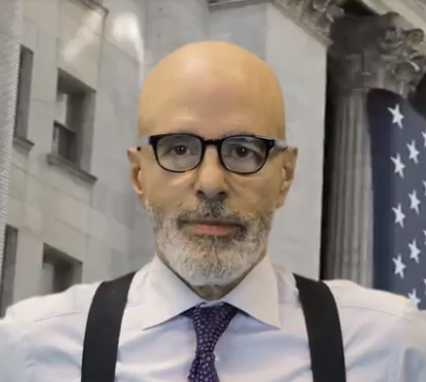 By David Nelson, CFA CMT
By David Nelson, CFA CMT
The five stages of grief is a phrase often used when discussing all sorts of tragedies including cancer, loss of a loved one, or any terminal illness. For those of us in the market the gain and loss of capital feels like life and death so even if not justified we apply the same emotional gravity to the outcome.
Denial, anger, bargaining, depression and finally acceptance is the journey we all go through.
In the middle of a bear market, we’re all at different stages of this journey but in the end, you’ll have to take the same emotional inventory and spend less time focused on what you got right and start fixing what you got wrong.
Denial, anger, bargaining and depression I’ve been through all that.
I accept that the era of free money is over, and the Fed will be draining liquidity to bring down inflation.
I accept that the government will undo much of what the Fed is trying to accomplish by pouring money back in.
I accept that U.S. energy policy is counterproductive and adds to inflation.
I accept that rising rates means stock valuations have to go lower.
I accept that globalization is likely over.
And finally, I accept that I have made mistakes underestimating all of the above.
Here’s what I don’t accept. I don’t accept there isn’t anything we can do about it.
We can whine and be angry that the Fed waited too long to act, or we can recognize their actions demand a different playbook. Some will choose to go to or stay in cash. Others will recognize that many of their favorite stocks will be out of favor for some time and understand that models need to change.
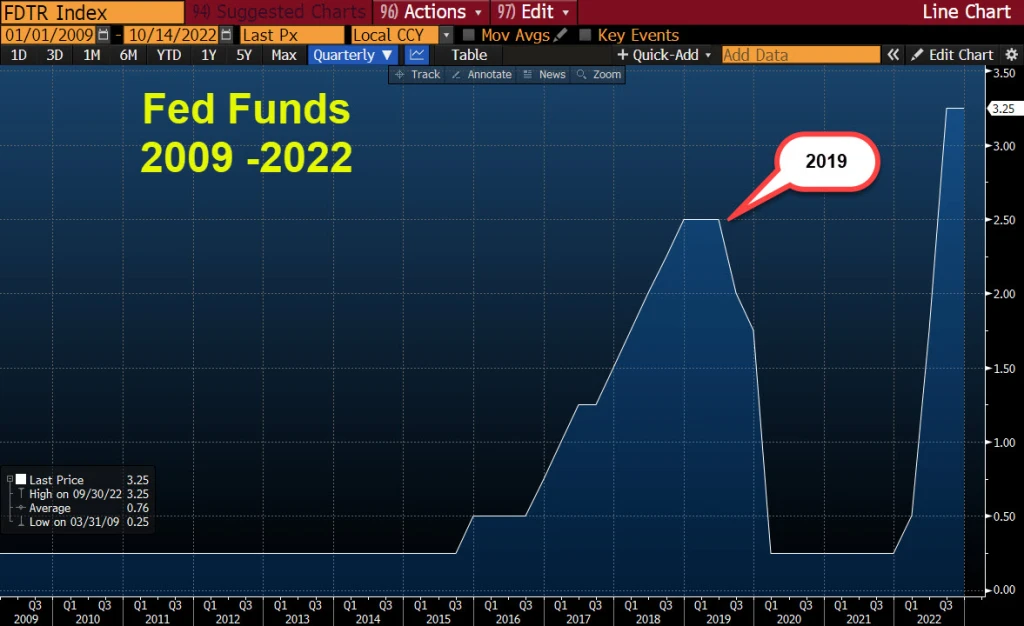
The Fed’s close to zero interest rate policy for the last decade along with a ballooning balance sheet fueled a massive liquidity bubble forcing capital into growth at any price investments. The S&P 500 is down -23.9% this year so at the very least much of the valuation correction is behind us.
But on a historical basis we’re still not cheap and each stair step higher in rates makes it a little more expensive. However, there are stocks trading at reasonable values that do meet the criteria. The bummer surrounding value stocks is that they are often boring. Growth stocks are sexy. They are about the future. There’s nothing sexy about a bank, a stodgy industrial company or a natural gas company.
We sometimes forget just what a stock represents. It is a contract between you and the company entitling you to your pro rata share of the earnings and or dividends of that company.
Growth vs Value YTD

Broadly speaking what’s happening at the individual security level really matters less than the big picture. At -23.9% the S&P 500 is in a bear market, but large cap growth stocks are down -32%.
It hasn’t been a great year for value either but you’re not in a bear market down about -16%. Lousy but down less than half of what growth is.
This is where a little history is important.
Growth vs Value March 2000 – December 2007
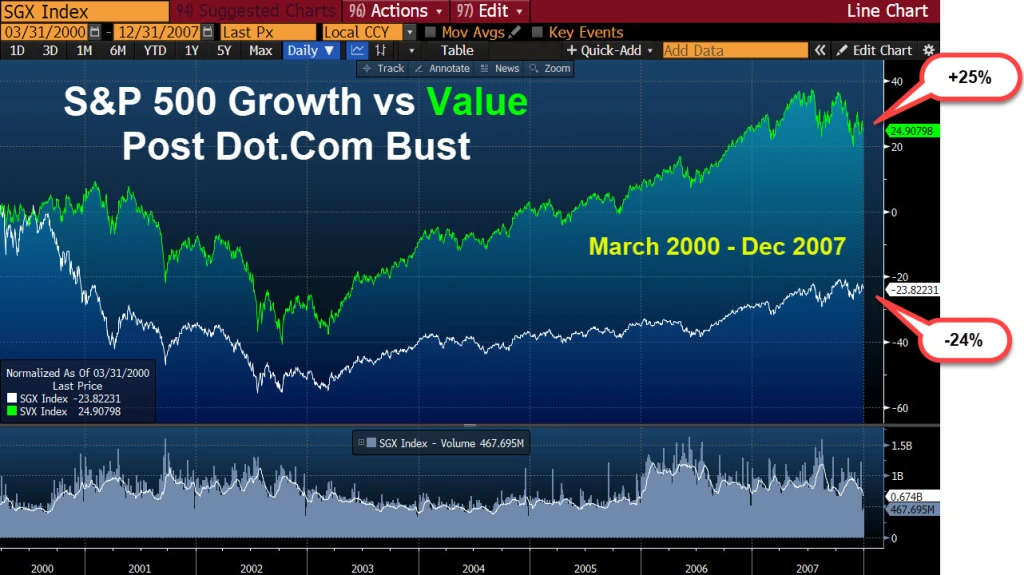
The last great drawdown in growth stocks was coming out of the dot.com bust. It’s understandable coming out of that bubble growth would underperform value. The difference was staggering. Value was up close to 25% while growth was down -24% over the next 8 years.
Growth vs Value October 2002 – December 2007
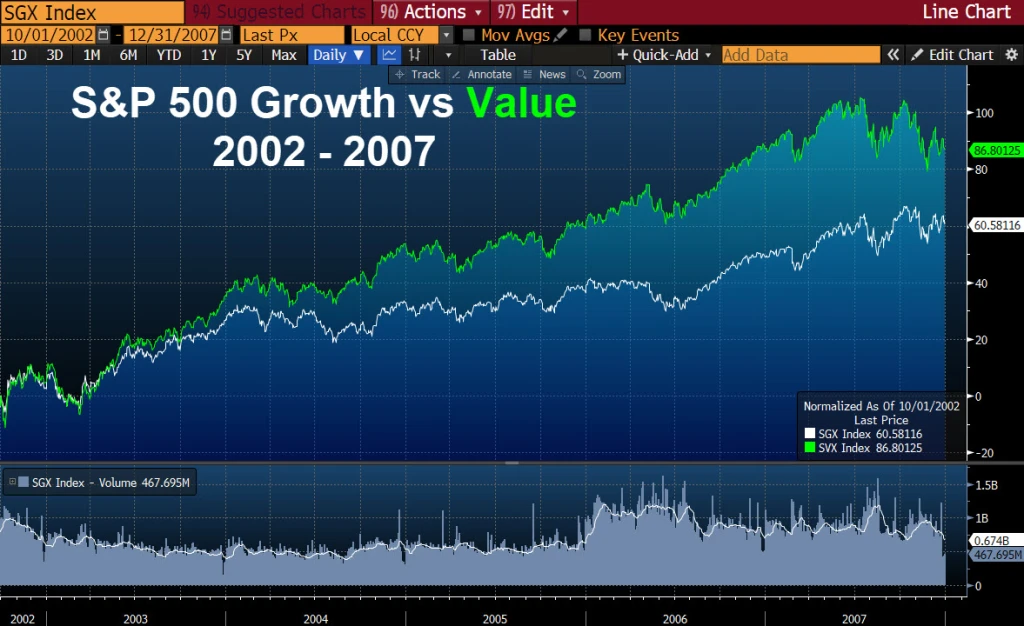
What about if we measure it from the bottom. The bottom occurred in October of 2002 as we were gearing up for the war but even here value outperformed by a wide margin.
So why the passion for growth stocks. Well, this chart is your answer.
Growth vs Value 2014-2021
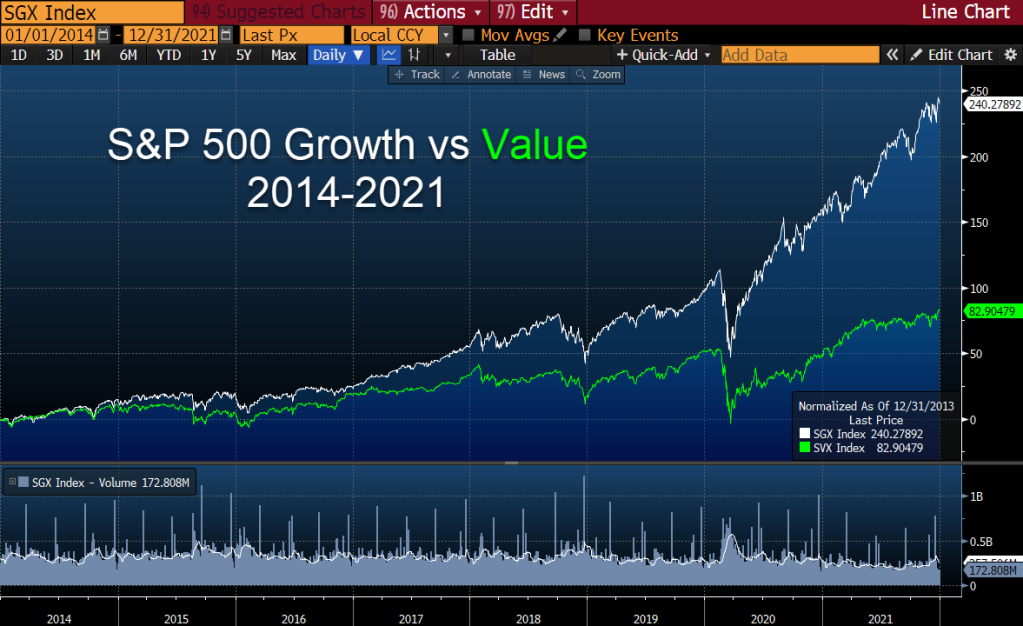
Coming out of the financial crisis value and growth performed closely to each other but something happened around 2014. Market participants became convinced that the Fed was going to keep rates lower for longer the opposite of today’s conditions.
There was a brief scare in 2018 when fed funds hit 2.5% and 10-year yields hit 3%. Markets struggled in Q4 of that year but recovered in early 2019 when Jay Powell blinked hinting the Fed was done with its hiking cycle and in fact started cutting later that year.
Covid and what followed is history and the Fed did the only thing they could following a near complete shutdown of the world economy. From 2014-2021 growth was the only path to success.
By the close of last year, the spread in performance was a massive 155%
Let’s be clear that isn’t happening again anytime soon. Even when we get to the other side of the Fed’s hiking cycle it will be years before the Fed balance sheet drains off to acceptable levels.
Fed Balance Sheet 2008-2022
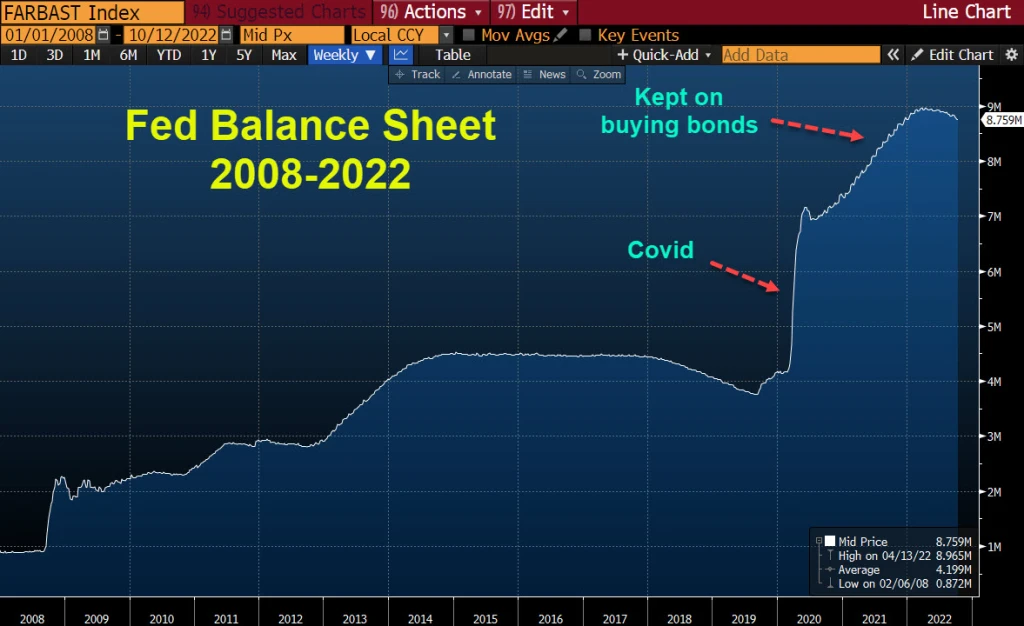
Markets will recover but it won’t be a drunken liquidity party on the other side. Investors will have a religion. Profits, cash flow and dividends will have a seat at the table. Revenue growth on its own is not going to cut it.
Some growth stocks will actually turn into value stocks. In fact that is already starting to happen. There will be increased focus on profitability, margins and returning capital to shareholders.
Growth vs Value June – October 2022

We’ve had a few periods this year when growth made a big surge back. Coming off the June bottom growth outperformed value.
Unfortunately, I only got half that trade correct. I recognized there was a shift underway but held onto the growth stocks I bought too long.
Moving forward we can’t stretch on valuation and the terminal rate for fed funds will be important metrics for us to monitor. The hot prints in both the CPI and PPI locks in another 75-basis point hike in November. The Fed’s timing has been less than ideal. A late start likely leads to a late exit and the consequences that go with it.
A recession is likely before we get out of this and that may not be the biggest danger. Central banks around the world have been at zero and sometimes negative rates for years.
Unwinding this will have unintended consequences. What’s happening in Great Britain is a warning sign.
UK GILT 30-Year

The Bank of England was forced to go into the open market and support the 30-year Gilt and Britain’s new Prime Minister was forced to do a 180-degree reversal as markets reacted violently to an unfunded stimulus.
If current monetary policy isn’t combined with fiscal restraint out of Washington something very similar will happen here.
Pingback: Bear Market – The Day After | DAVID NELSON, CFA